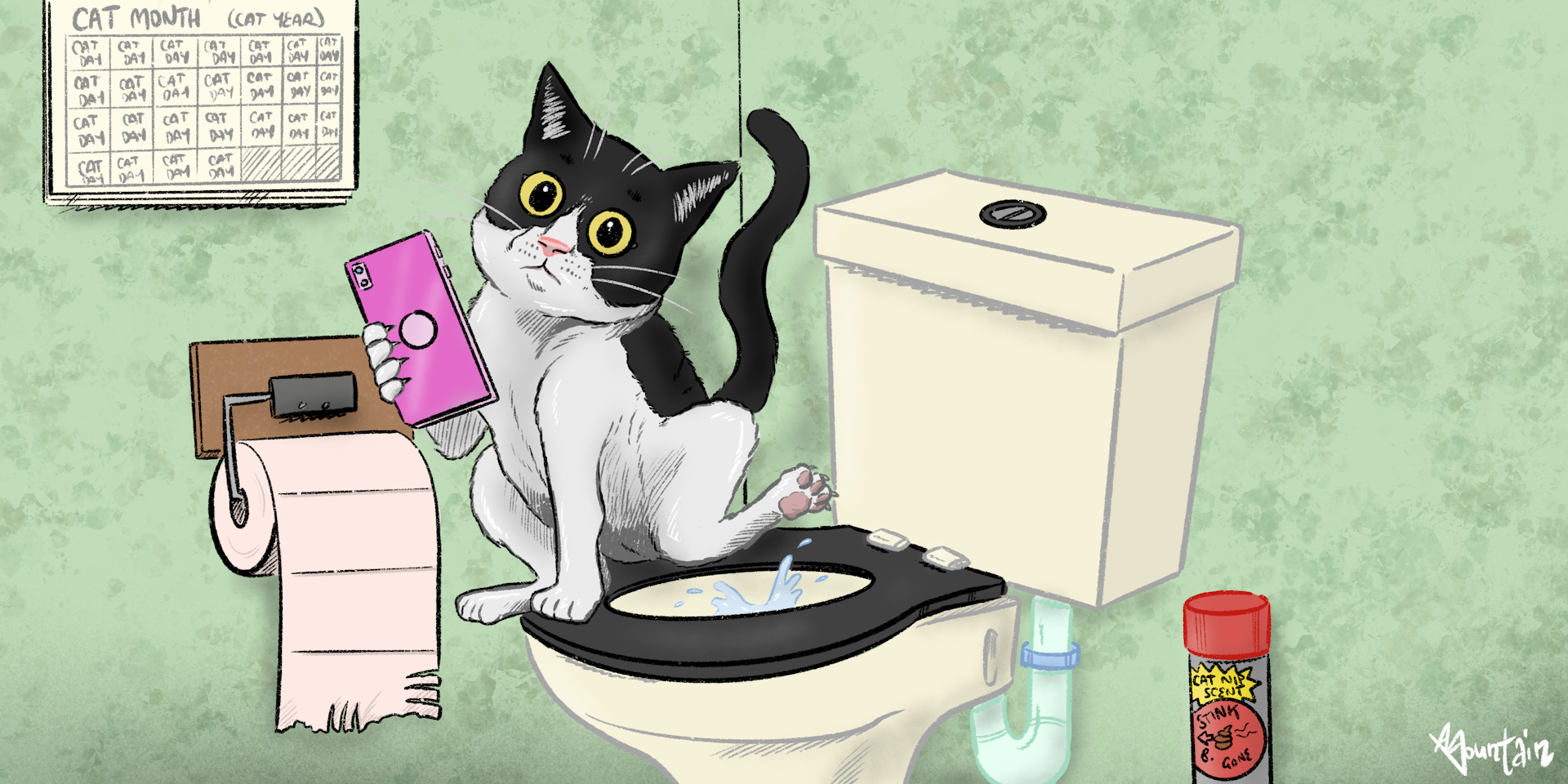Why Flushing Cat Poop Down Your Toilet Isn't a Good Idea - Tips for Proper Handling
Why Flushing Cat Poop Down Your Toilet Isn't a Good Idea - Tips for Proper Handling
Blog Article
In this article in the next paragraph you can find a good deal of amazing help and advice around How to Dispose of Cat Poop and Litter Without Plastic Bags.

Intro
As pet cat proprietors, it's essential to bear in mind how we throw away our feline buddies' waste. While it might appear convenient to flush pet cat poop down the bathroom, this method can have destructive consequences for both the setting and human health and wellness.
Ecological Impact
Purging feline poop presents hazardous virus and parasites right into the water system, presenting a substantial risk to marine communities. These contaminants can adversely impact aquatic life and concession water quality.
Health and wellness Risks
Along with environmental concerns, purging cat waste can also position wellness dangers to humans. Pet cat feces may consist of Toxoplasma gondii, a bloodsucker that can cause toxoplasmosis-- a potentially serious health problem, specifically for pregnant ladies and individuals with damaged immune systems.
Alternatives to Flushing
The good news is, there are much safer and a lot more accountable methods to throw away feline poop. Take into consideration the complying with alternatives:
1. Scoop and Dispose in Trash
One of the most common method of dealing with cat poop is to scoop it right into a naturally degradable bag and toss it in the garbage. Make certain to utilize a devoted litter inside story and take care of the waste promptly.
2. Usage Biodegradable Litter
Choose eco-friendly cat trash made from products such as corn or wheat. These litters are environmentally friendly and can be securely dealt with in the garbage.
3. Bury in the Yard
If you have a backyard, think about burying cat waste in an assigned area away from vegetable gardens and water sources. Be sure to dig deep enough to prevent contamination of groundwater.
4. Mount a Pet Waste Disposal System
Invest in a pet waste disposal system especially made for cat waste. These systems utilize enzymes to break down the waste, decreasing odor and environmental impact.
Conclusion
Accountable pet possession extends beyond giving food and shelter-- it likewise includes correct waste management. By refraining from purging cat poop down the commode and going with alternative disposal approaches, we can lessen our environmental footprint and shield human health and wellness.
CAN I FLUSH MY CAT'S POOP DOWN THE TOILET?
Always avoid flushing cat poop down the drain because not only could it potentially contain harmful parasites called toxoplasmosis, the litter could sit in your line and lead to a clog.
Plenty of waste gets flushed down your toilet every day, so what harm could a little cat poop and cat litter do? The answer is a lot, which is why you never want to send it down your drains.
Can I Flush My Cat's Poop Down The Toilet?One of the biggest problems with flushing your cat’s presents is the harmful parasites in your feline’s stool called toxoplasmosis. Extremely dangerous for humans, especially pregnant women and people who are immunocompromised, these parasites can cause a multitude of problems for unborn babies and even cause death or miscarriage if the infection happens early. That’s why you should always avoid touching cat poop. Also, water systems are not equipped to handle toxoplasmosis and are unable to destroy the parasite before it’s sent back into the environment, potentially jeopardizing the health of local area wildlife, specifically marine life.
Flushing cat poop could also lead to a future drain clog. Try as you may to eliminate any litter from it, there will always still be some stuck on there – and even if it says flushable on the label, it’s not! Cat litter is made up of bentonite clay, which has the tendency to harden when wet, creating a thick, almost cement-like quality. Cat litter that ends up down the drain can expand from the moisture in the pipes and then harden, blocking any wastewater. If you have a septic tank or a cesspool, it cannot handle cat litter either, no matter what kind. If it solidifies in the tank, in any of the system’s major parts like the inlet baffle, it’ll create some expensive problems.
The best way to dispose of cat poop safely is to scoop it into a bag and throw it into the trash – and ways of dealing with the smell include adding baking soda and replacing the box more.
Now that we’ve explained the potential harm that flushing cat poop can cause to you and your drains, you might be wondering the best way of dealing with it. Unfortunately, it’s the old-fashioned way of scooping it into a bag and then placing it into a trash can. They also make pet-proof trash cans that lock in the smell, so that you don’t have to always immediately take it out. If you’re tired of smelling the litter box after even just one use from your feline, there’s things you can do to help combat that smell. Adding baking soda to the litter will reduce smells, but just don’t add too much or your cat will no longer want to use the box. You could also replace the box more frequently, at least once a year, as those smells can just seep inside the scratch marks. Lastly, try changing to a new litter formula – some are better with smells than others.

Hopefully you enjoyed reading our excerpt about Don’t flush cat feces down the toilet. Thanks a ton for taking a few minutes to browse our article. Do you know about someone else who is interested by the subject? Do not hesitate to share it. Many thanks for your time spent reading it.
Visit My Website Report this page